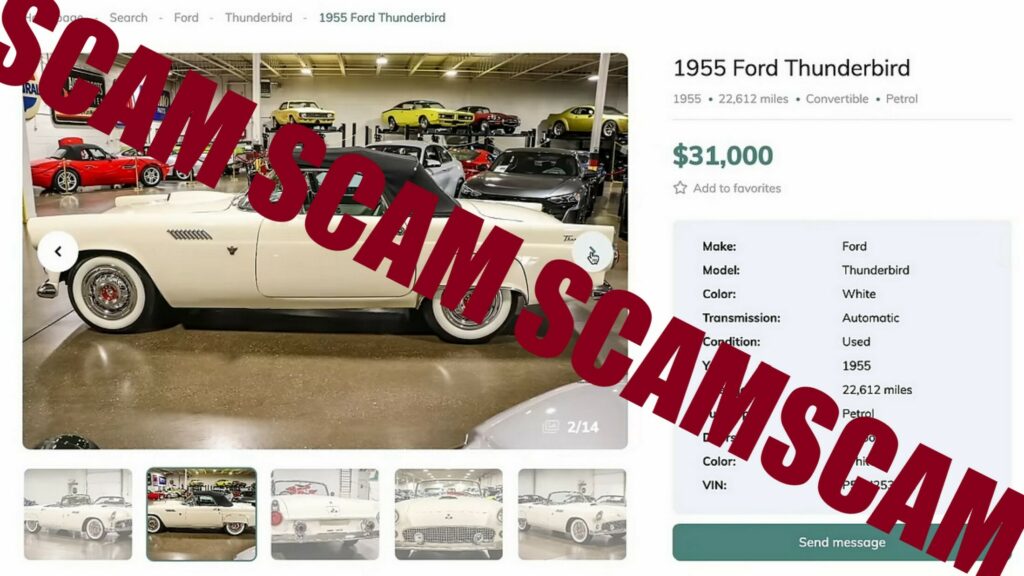In recent years, classic car values have risen quickly, and online sales have become a more and more common part of our daily lives. So it shouldn’t come as a surprise that there are scammers out there who want to take advantage of that for their own personal gain.
Increasingly, ill-intentioned people are stealing photos from real classified ads and using sophisticated techniques to pretend that they are selling vehicles that they do not actually possess. YouTuber Pleasant Green recently decided to find out how it’s done in a new video.
By trawling the internet for classic car ads that looked too good to be true (such as a 1955 Ford Thunderbird for $31,000), he found a number of scammers looking to steal enthusiasts’ money. All listed real addresses, connected to phone numbers, and some were able to provide the YouTuber with convincing ownership documents.
Read: Classic Car Dealer In Maine That Never Existed Scams Buyers Out Of Thousands Of Dollars
A photoshopped image (notice the different names of the store at the top of the photo) may be another sign that scammers are involved
While the whole video is worth a watch, Pleasant Green highlights a few red flags that buyers should be on the lookout for, and a few measures they can take to protect themselves from being duped by such scammers.
First of all, prices that are too good to be true, likely are. But not every car is as obscenely underpriced as the above-mentioned T-bird. That’s why it’s helpful to use reverse image search to look up any pictures used by online retailers. If another dealer has used the exact same photos of the car you’re interested in, that’s a red flag.
In addition, looking up the address of the location listed by the seller can be helpful. Firstly, you can see if it’s real, and you can use Google street view to find more clues. If, for example, the building or even the collection of vehicles on the site looks nothing like the one listed online, that’s a red flag. If a scammer is using a real dealer’s address, you may also find the real shop’s phone number, and you can call to see if the vehicle is really there.
For those who are already in the process of buying a vehicle, the state may also be able to help. Pleasant Green was able to check with the Texas motor vehicle enforcement division to confirm that the VIN for the car he was looking at was not registered there, and that the documents he had been sent were fake.
While it’s always a good idea to see a car in real life before putting any money down, that can be difficult with older, rarer vehicles, so it’s inevitable that some buyers will have to make a leap of faith to get their dream car. Hopefully, by using some of the tools outlined in this video, you can protect yourself from scammers.






